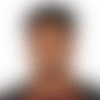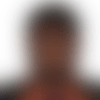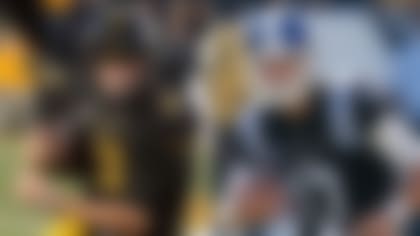Welcome to my first official mock draft! My analytics-based mock is based solely on a contextual, data-driven model that aims to do one thing: maximize each team's potential to win as many games as possible in 2019.
So, before you read any further, take note: I am NOT attempting to predict or divine what teams will ACTUALLY DO on draft day. This is not meant to predict how the draft will play out in reality. Rather, I am using this model to, again, examine what teams should do if winning the most games in 2019 is their only goal.
Here's how my mock works: I use my draft prospect model, explained at the top of the article linked to here, and go deeper to create a numerical value for each player. These ratings can be compared across years.
Then I use my NFL model, adjusted for new free agent signings, to create projected win-contribution metrics by player, position group and side of the ball. These get added up to forecast win totals for the season. An example of these for WRs can be found in the article linked to here.
The results quantify strengths and weaknesses of current NFL rosters. My model also factors in as many known elements of coaching philosophies (of the current staffs) as possible, and of the 2019 opponents. Then my model "selects" the draft prospect that would yield the highest win total for each team next season.
Here's the part that's extra: I have projections and results for all teams and the draft prospects they selected over the past 15 seasons. I examine each season's on-field results, objectively analyzing what happened, along with the trends and strategies that led to success or failure. I also ask coaches, front office executives and even players to help me understand why results occurred. These subjective inputs help shape the results, meaning the model gets "smarter" each season.
Lastly, there are a lot of efficiencies that could be realized via trades. Consider that the Giants and Packers each have two first-round selections, and the Raiders have three; you can imagine how many trade scenarios are possible. So instead of getting into the weeds with imagined trades, I've held the order constant and added Round 2 -- with names but no analysis -- to give a fuller picture for each team.
To see every pick each team holds in the 2019 NFL Draft, click here.
School: Alabama | Year: Junior (RS)
At Alabama last season, Williams recorded eight sacks and 71 tackles (19.5 for loss). If we look deeper, we see that, despite being double-teamed at the highest rate in the SEC, he was the most effective interior defender BOTH at stopping the run (42 stops, most among interior defenders, per Pro Football Focus) and defending the pass (56 pressures per PFF, also the most in his position group). As I told you, I create a multi-season model, and Williams has a top-five rating in the sample for his position compared to the projections of past players. Remember also that, as passing -- especially quick passing -- becomes more prevalent, the value of this position rises. Williams' multiple capabilities would help the
Cardinals address their league-worst red-zone passer rating and completion percentage allowed last season (122.5 and 73.7 percent). Setting aside the long-term implications of what Arizona decides to do with the quarterback position, my model has Arizona winning more games
in 2019 with incumbent
Josh Rosen starting at QB and Williams on the team than it does with
Kyler Murray starting at QB and no first-round upgrade coming on defense.
School: Georgia | Year: Senior
Remember when I told you that I wasn't allowing myself to do trades? Well, this pick is an example of where a team
could trade down, likely still get the same player and reap a haul in terms of additional picks. I am going to guess people will be a little shocked by a corner being drafted second overall, but hear me out. The acquisitions of veterans
Dee Ford and
Kwon Alexander changed the Niners' potential up front. Adding Baker means realizing the NFL-level value of a player who showed at Georgia he could be effective in multiple schemes, possesses elite game-measured speed and, according to PFF, only allowed 10 first downs (and no touchdowns) last season. Baker's projected NFL contribution creates the kind of front-back defensive balance that has proven to be most correlated to wins. The Niners' defense posted the lowest single-season marks in NFL history in takeaways (seven) and interceptions (two) last season. Adding Baker here makes all of their other investments (including the signing of veteran corner
Richard Sherman last season) most effective and efficient.
There are a lot of well-documented positives about this edge rusher, but I can add one that may be more unique: Over his past two seasons (17 games), according to my model, not only has he been an elite disruptor, but he's done it from the broadest range of spaces on the field (think: beating tackles outside and sliding inside to beat guards).
The Raiders' defense managed only 13 sacks last season, fewest in the NFL. Projecting the Raiders' defensive stats next season with Allen on the edge shows he could account for more than half of their sack total from last year by himself; in 61 percent of way-too-early simulations, he earns 7-plus sacks.
Kwon Alexander signed in San Francisco, further depleting a defense that allowed a league-worst 110.9 passer rating last season. Adding my model's highest-impact linebacker -- and the one whose coverage potential is the greatest at the next level -- moves the
Buccaneers' win-total needle the most. Separately from the analytics, I have asked 10 individual sources from 10 different teams for their thoughts on him -- I ask on-field questions only -- and they have all gone out of their way to give glowing "personality" reviews. Of the 100-plus guys I have asked about in this draft class, White is the one I have heard of as having the most positive "intangibles."
</content:power-ranking>
Gary's Michigan resume flags him as more of an exceptional athlete than a polished Day 1 starter in the NFL, but the fit here lies in the fact that his role in New York would be somewhat undefined and offer room to maximize his abilities. Gary covered more ground on average in the first 2 seconds after the ball was snapped on passing downs than any other player at his position in the Big Ten over the last two seasons -- but that didn't translate into the highest sack or pressure rates, though. The Giants traded away Olivier Vernon and seem to be rebuilding under coordinator James Bettcher. Helping Gary to realize his potential (and on the edge, no less) gives them the biggest return for the sixth pick.
With Cam Robinson returning from a torn ACL to play left tackle, my model projects the addition of Taylor on the right, where he played at Florida. This will go a long way toward reducing the Jags' pressure and sack totals, with new quarterback Nick Foles taking the reins. Jacksonville allowed 53 sacks last season (tied for 29th in the NFL).
Detroit added defensive end Trey Flowers to a unit that also includes cornerback Darius Slay, and my model shows that complementing both Flowers and Slay with this cornerback drives the biggest win-total increase for the Lions. Williams' game-measured straight-line speed staying with receivers (which I measured via computer vision) during his time at LSU and the disruption caused by jamming receivers from the line of scrimmage make him a strategic fit.
The Bills' defense gave up the third fewest yards per play last season (4.86) and were one of only four teams to allow 5 or fewer yards per play on first down (4.97). In the wake of Kyle Williams' retirement, fortifying the defensive tackle position is key. The Clemson product's ability to both stop the run and defend the pass meant he graded in the top three amongst interior defenders last season, per PFF.
My model really likes Williams as a right tackle. I know Denver just invested in a right tackle (Ja'Wuan James) in free agency, and I do have guard as a fit for Williams, as well. But the combination of Williams at right tackle and Garett Bolles at left tackle creates the best opportunity for QB Joe Flacco and the passing game to succeed. According to PFF, Williams only allowed 12 pressures at Alabama last season.
There's a large gap between both linebackers named Devin and the rest of the linebacker field. In light of veteran LB Vontaze Burfict's departure, Cincinnati adds the linebacker with the best ability to help affect pressure both by rushing the passer (10 sacks in the last two seasons) and in coverage (11 passes defensed over the past two seasons).
Addressing their defense this offseason, via the signings of Za'Darius Smith, Preston Smith and Adrian Amos, created a lot of options for the Packers, like, say, trading this pick. Nevertheless, if Green Bay hangs on to the No. 12 selection, Hockenson could be attractive. He dropped only one pass on 51 targets last season (per PFF), and his Iowa resume flags him as a potential generational talent at the position.
I don't think this will happen, because in reality, Murray likely won't still be available. But I can see what the model was doing here. For a team with a lot of areas to focus on, Murray's ability to run the ball is a big difference-maker (Murray rushed for 1,001 yards on 140 attempts last season, or 7.2 yards per attempt, with 12 TDs); as a more mobile quarterback who is also accurate, his knack for creating would make him a good fit behind Miami's questionable line.
With Deion Jones and Keanu Neal returning from injury, putting Oliver next to Grady Jarrett completely changes the space opposing offenses would have to work with in the middle of the field. Considering the Falcons gave up the most passing yards on first down last season (132.6), this selection would be especially helpful in the NFC South; last season, all NFC South teams earned at least 100.5 receiving yards per game on first down, ranking in the top half of the NFL.
With Preston Smith now a Packer, drafting Sweat provides the best return on investment, based on Sweat's status as the best edge and hybrid front rusher of the players still available here. The Redskins' defense allowed the fourth highest third-down conversion percentage (43.9) last season.
My computer vision metrics reveal that Dillard has far superior results in pass protection vs. helping to set up the run. Dillard is likely to succeed at either tackle position.
Lawrence's addition to the team helps fill the void left by Damon Harrison's trade to the Lions last October. Lawrence's profile is that of a "real" nose tackle, except with more speed. Yes, he posted a 5.05-second 40-yard dash as a 6-4 342-pounder -- but I'm talking more about his game speed as measured by computer vision.
We do not have a firm timeline on Simmons' return from the torn ACL he suffered this February, however, it's certainly possible he'll recover in time to play during his rookie season. Yes, my model really focuses on wins this season -- which means it's a little confusing as to how we got here. Here's how: With Sheldon Richardson having signed in Cleveland, the need for the Vikings at this position increases. Thanks to the presence of an already-great defense, the possibility of getting Simmons even for six games pushes them into a playoff-possible win total range.
My wide receiver list is way different from those of many other draft analysts, and I'm kind of bummed Brown is the only receiver going in Round 1 here. No receiver in a Power-Five school had more yards after the catch with contact. (This is not just yards after the catch; rather, we're talking about yards after catches that were contested or included contact on an attempted tackle.)
The interior of the Seahawks' line is a major area of potential improvement, and North Carolina State's center is the highest rated here.
The Clemson edge rusher, who racked up 20 sacks over the past two seasons, helps restock a Ravens defense depleted by the departures of Za'Darius Smith, Terrell Suggs and C.J. Mosley.
The Texans' O-line was my lowest rated O-line last season. Risner was a four-year starter at Kansas State and provides the kind of pass and run protection at the tackle position that will help optimize QB Deshaun Watson's efficiency.
The Raiders' O-line was problematic last season -- and that was before Kelechi Osemele was traded away. Free-agent signee Trent Brown would be best complemented at left tackle by the addition of an upgrade at right tackle (even with 2018 first-round OT Kolton Miller on the roster), which is where this Oklahoma product projects to be most successful.
Defensive back flags as the area where the Eagles have the biggest need. The Mississippi State safety projects to fit well with Malcolm Jenkins in a hybrid safety role. My favorite note on him: During his time at Mississippi State, Abram had the most positive results of all the safeties in this draft (measured by disruptions to catches and limiting yards after the catch) when asked to defend the slot.
At Florida State last season, Burns recorded the third most pressures (66, per PFF) among edge defenders. As measured by my computer vision, Burns covered the third most average yards per play in 2 seconds or less among edge defenders in the ACC.
The spot across from Gareon Conley is very important to the Raiders' win totals, once the pass rush and O-line are upgraded. Ya-Sin's game speed and ball tracking ratings are high. He wasn't asked to play zone in college as often as other corners in this draft, but nevertheless, he would be a projected Day 1 starter for Oakland.
*Adderley + Derwin James = yikes for other teams.* The Delaware safety has strong coverage upside at the NFL level.
</content:power-ranking>
Switching to a 4-3 means more opportunity for interior pressure to be game-changing. The impact of Notre Dame interior rusher Tillery, especially next to Chris Jones, will help offset the loss of Dee Ford, who himself was responsible for 10 turnovers last season.
Adding to the interior of the offensive line is the next most impactful move the Packers could make if the draft shook out like this. The Mississippi State center would really help a line that allowed 53 sacks (tied for third most in the NFL). PFF measures Jenkins as only allowing five total pressures in 369 pass blocking snaps last season.
The Rams added free safety Eric Weddle this offseason, and the Alabama safety would be an excellent complement to him. This is another instance of a safety being projected as a hybrid, and coordinator Wade Phillips is exactly the right teacher to get the most out of him. One big trend reflected in my model is the evolution of the safety position. This is a prime example, because for another team, Thompson would be more of a "true" free safety. But as offenses evolve, changing the roles of tight ends and running backs and relying more on short and quick passes, safety roles are evolving, too..
If you think I'm suggesting Tom Brady isn't playing, think again. Backup quarterbacks are underrated. Consider that 16 teams -- half of the NFL -- used multiple quarterbacks last season. Also, I've been tracking teams who have starter-level backups and strong development plans for future starters, and they win more games. Non-starters who have similar play-style profiles to the starters also have greater rates of success, and in this sense, the pocket-passing Haskins fits.
Follow Cynthia Frelund on Twitter @cfrelund.



































































